Can a serval cat kill a human: Big african breed, what a kitten looks like, Information – Serval cats are predatory mammals of the cat family. They are called shrubs, because the usual habitat of animals is not always associated with the forest. Most species prefer savannahs, bushes, semi-deserts. However, there are still those who live in the forests.
Serval cats are predatory mammals of the cat family.
What does a serval look like?
This graceful cat looks something like a cheetah. The same long legs, relatively small head and two stripes, descending from the inside of the eyes. Their nature invented for mimicry in the grass thickets. However, it all looks very sad. It seems that this African predator was unjustly offended by someone. Since then, from the piercing gaze of a wild animal, a strip of resentment always stretches, giving the face not so much a pitiful as a stern look.
Most species prefer savannahs, bushes, semi-deserts. However, there are still those who live in the forests
The African cat Serval is a slender, long-legged animal of medium size. However, compared to a domestic cat, it is a big, fast and wild creature.
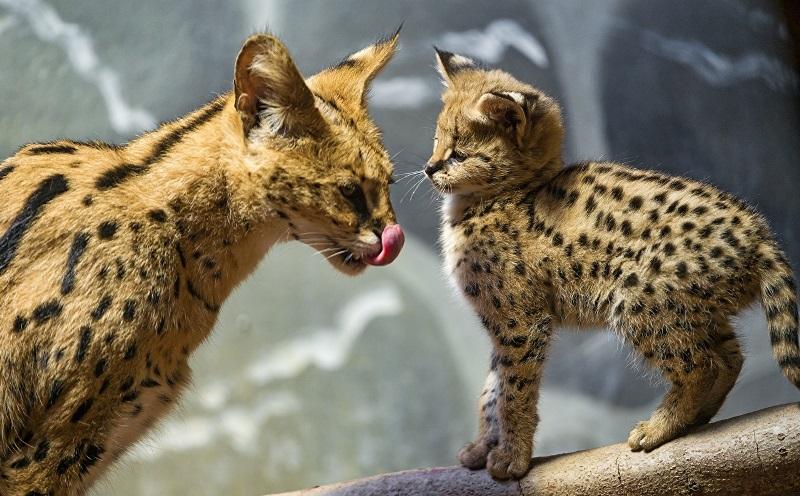
Body length ranges from 90 to 135 cm, height at withers – from 40 to 65 cm. The weight of this cat is relatively small. It fits into the interval from 8 to 18 kg. Ordinary domestic cats fed by their mistresses can reach such a mass.
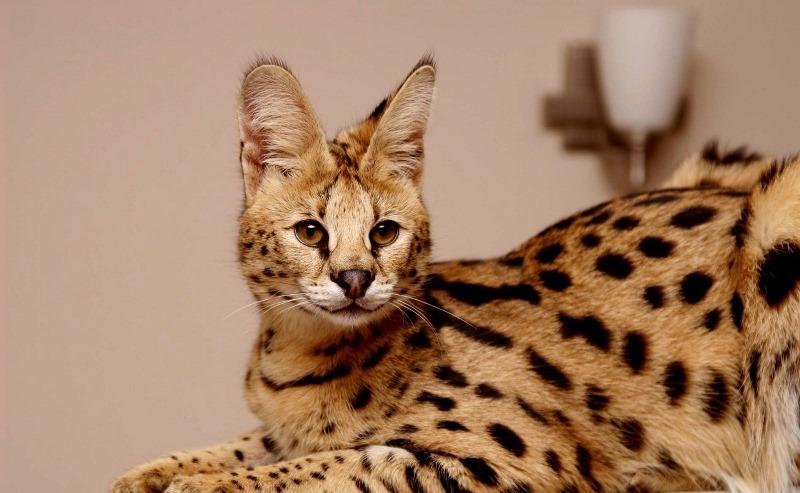
Cat Serval among all the small cats has the highest paws and big ears. But his head is small and elongated horizontally. The tail for a cat of this size is short – only about 40 cm, that is, less than the length of the body.
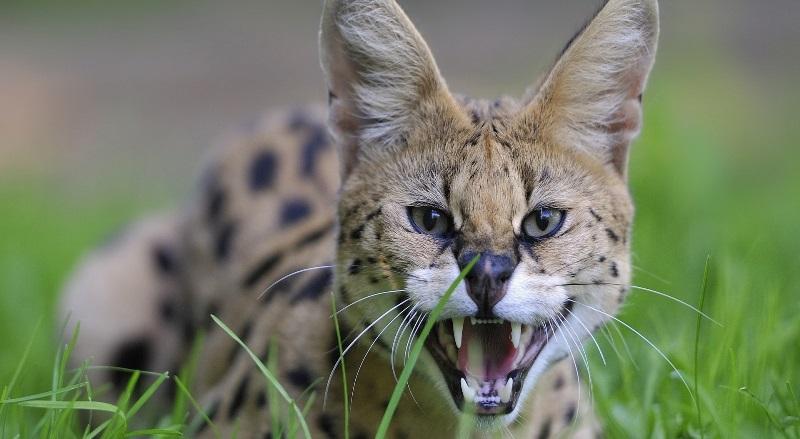
Servals are considered to be close relatives of lynxes and caracals, although outwardly they look more like a miniature cheetah. The camouflage of this cat is designed to hide in the tall grass and shrubs. This is a combination of dark spots and stripes on a yellowish-gray background. His chest, abdomen and muzzle are bright, with occasional spots. The ears are also spotty – yellow or white spots are scattered on a black background.
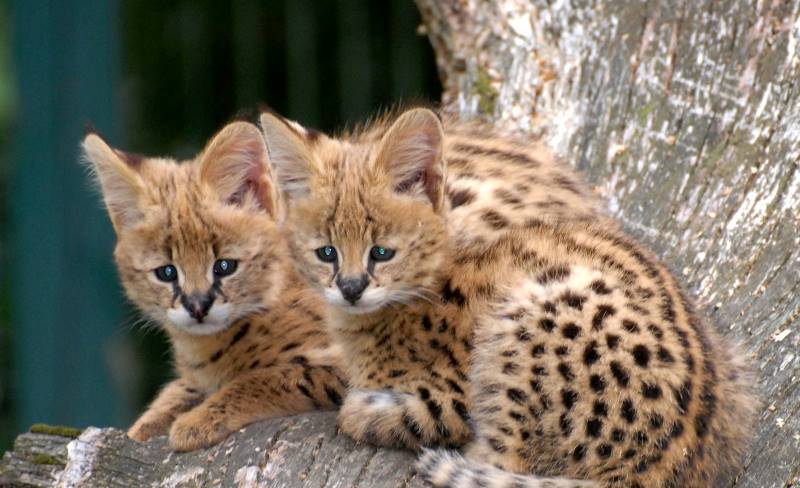
Dangerous cats (video)
Gallery: Serval cat (25 photos)
Geographic differences in the servals phenotype
These felines live in Africa, but in different regions and environments.
Servals living in areas where there are no solid forests, have large spots on a light background. Living among the trees have a darker color, small spots and not so long legs. The difference in appearance and habitat allowed them to be distinguished in a special subspecies of serval-shaped cats, or servaline. However, later biologists changed their mind and returned the name Serval to the forest populations of these cats.
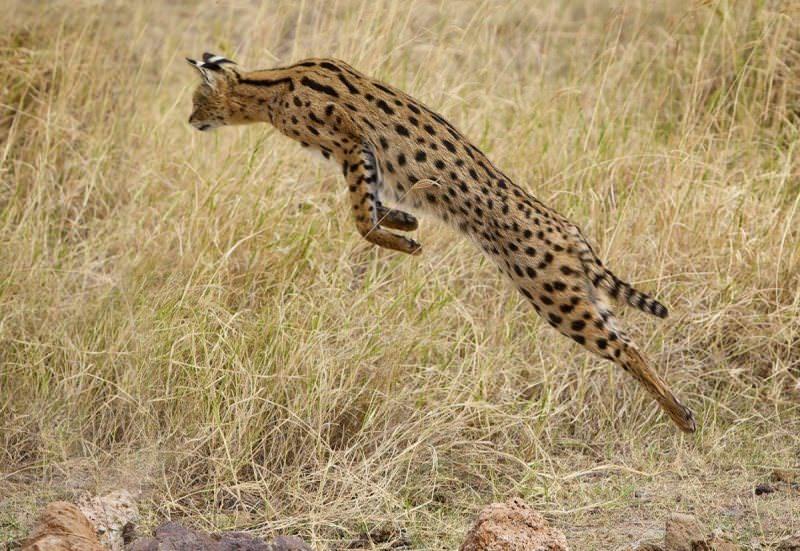
African cat Serval is a slender, long-legged animal of medium size
There are other geographical features of serval populations. For example, completely black animals live in the mountains of Kenya, making up about half of the population of local representatives of this species. This is due to the characteristics of the genome structure of most cats of this population, which is mainly due to geographic isolation. Natural barriers do not allow the exchange of genetic material, which produces a natural selection for a number of signs. In particular, a sign of melanism was fixed in this area.
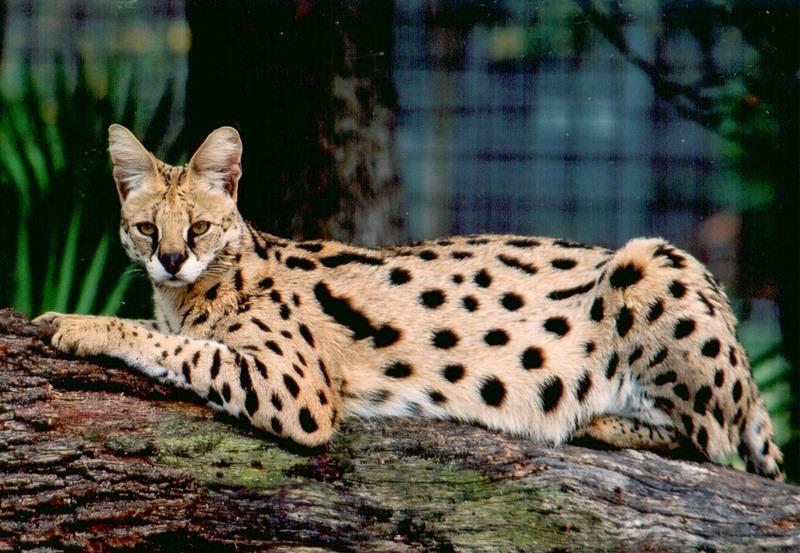
Servala home
Serval cat breed appeared at home recently. It turned out that these wild predators under certain conditions may well live next to a person, becoming a member of his family. Moreover, they are able to interbreed with domestic cats and even with caracals.
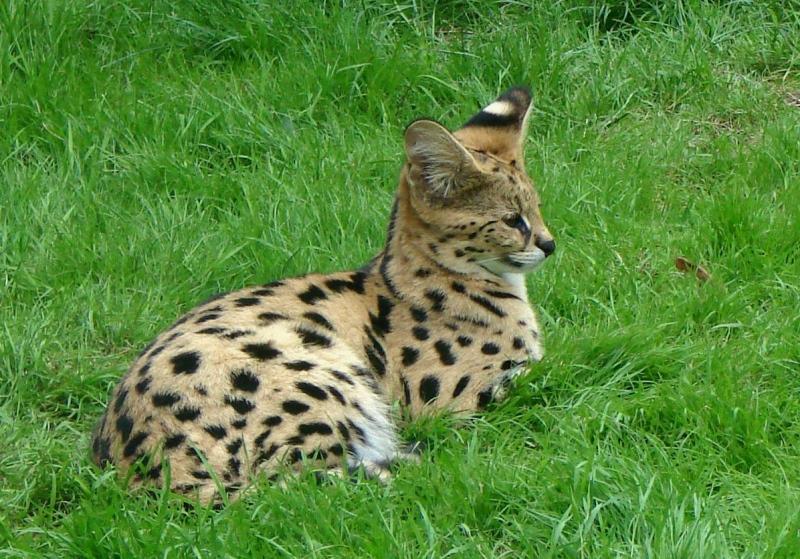
The big cat of the Serval breed gradually began to fill the apartments and estates. This happened spontaneously. Just from traveling in Africa, a wild kitten was brought in, who was raised as an unusual home inhabitant.
Despite the fact that Serval almost became a domestic cat, there is no standard for such a breed yet. However, work in this area is underway, and a description of a new domesticated cat already exists.

To characterize this breed can be as follows.
Body size. Compared to ordinary domestic cats, servals seem giants. As it was said above about the wild inhabitants of Africa, these cats are more than a meter long. At home, sizes can be larger if, of course, they are fed and treated well.
Head. Relatively small, but the ears are very large, set high, fitted with fur from the inside, and painted black and white on the outside. Despite the elongated shape of the face, nose and nose bridge are wide. The eyes, even for the feline family, are extremely almond-shaped. This still wild, genetically completely non-domesticated graceful cat has the characteristics of an ideal hunter. In particular, he has well expressed vibrissae as a special sense organ. They are long, well-marked and very dense.
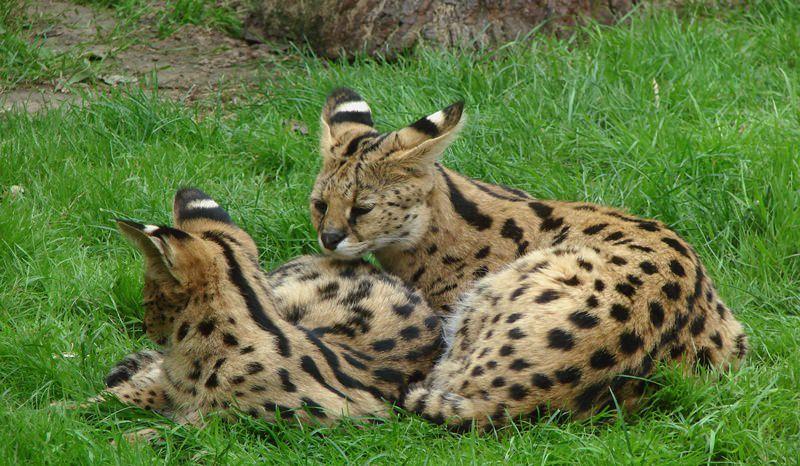
Legs. People in these cats are attracted, above all, their wildness and singularity. However, one of the most interesting characteristics of animals are long legs. The hind limbs are noticeably longer than the front. Under natural conditions, such proportions allow you to make a big jump. Servalas, of course, are not cheetahs, they cannot run a lot and quickly, but they manage to make a rapid dash for prey perfectly well.
Wool. Short, very gentle, silky and shiny. This, by the way, distinguishes a healthy cat from a patient. Coloring like a wild individual.
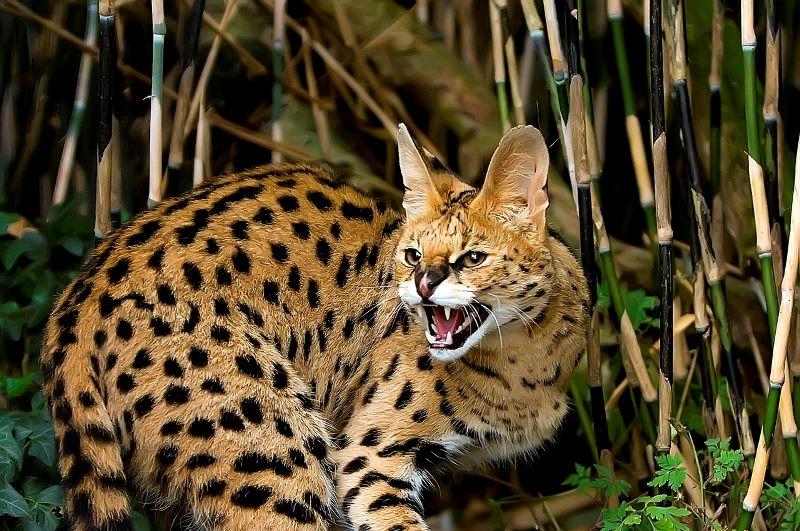
Can a serval cat kill a human: Is the home serval dangerous?
These cats are distinguished by a wild temperament, suggesting that their closest ancestors had recently run across the savannas of Africa and got their own food. Moreover, they had to live in conditions where they were also hunted. It is a big serval in the apartment, and in the savannah, in front of a lion, cheetah, hyenas, giant snakes and even monkeys, it becomes a small creature that needs to be especially quick in order that nobody eats it.
So servals are cats with a strong and sharp character. Moreover, they have not gone through hundreds of years of domestication, that is, artificial selection for a number of signs.
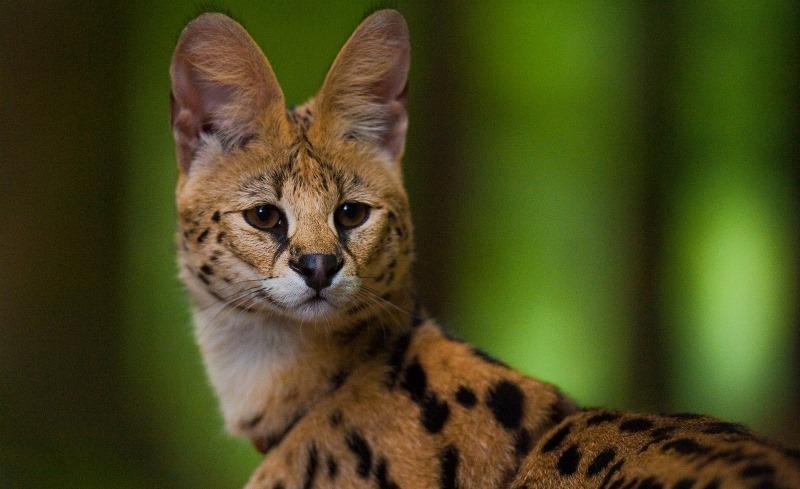
About domestic cats say they walk by themselves. Yes, these animals can go somewhere for a long walk, go about their business, and then return home. Moreover, the concept of “home” for them loses the image of a hole, where you can hide and relax, and it also acquires a sense of space, where people who love them, which cats value, are also. This is domestication, when the animal has a feeling of its home.
Does the serval have such a feeling? Hard to say. Most of the owners of this animal assure that this big cat lives peacefully under the same roof with a man, which gives pleasure to both parties.
However, judging from some details, these wild cats still undergo a thorough course of training and moderate suppression of natural instincts.
Most mammals and birds can be tamed. The descendants of domesticated parents will live in a different setting and build their behavior as an animal for which man is not an enemy. This means that with the right approach of a person, the servals will not show their instincts for the hunter and the defending victim.
The most dangerous thing in life under one roof with predators is the manifestation of not fears, but hunting fears. It is he who makes the attack first.
The fashion for keeping wild animals at home is only gaining momentum. Servals and ferrets live in the apartments now. Someone keeps a lion at home. Hobbies are dangerous and require special skills and patience from the owners. Living large predatory animals next to a man has already ended in great tragedies.
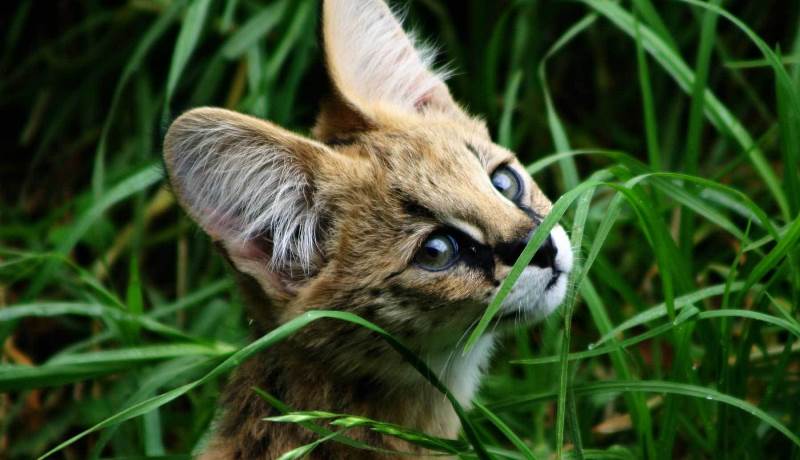
Once in the palaces contained manual cheetahs, who submitted to the force, but did not become domestic.
The question remains – is it possible to domestic servals? Experience shows that it is possible. At least, this process is already underway. The problem is that it is not yet complete. In order for domestication to occur successfully, it is necessary to constantly select for a number of genetic and phenotypic traits. Purposefully, this work is not carried out, although spontaneous selection occurs. Simply, many people give birth to servals, taking a kitten not from the savannas of Africa, but from people.
Nevertheless, the problem of keeping these animals in the house remains. They are beautiful, give in to training and education. However, these are not domestic cats.
Home Serval (video)
How to keep the serval at home?
If you have taken a wonderful and unusual kitten from proven breeders, then be prepared for the following:
- Wild Africans need to float claws and jump 2 meters up.
- He needs to conquer peaks, that is, cabinets, chandeliers, curtains, etc.
- Serval games are quite similar to the entertainment of ordinary cats, but they are much more active, with damage to the elements of the environment.
- Get ready for the integrity of your skin to suffer, because the host will become the object of active wild African games.
- There may be problems communicating serval with children. It is unlikely that a cat, accustomed to living among people, will behave especially aggressively towards some of them. However, active games with children can end up with wounds and other injuries.
All this is not described in order to intimidate the owners of a kitten serval and force to keep the charming creature in a cage.
These cats may well live in the same house with a person as a family member. Just need to bring it up a little stricter than the usual representatives of the cat.
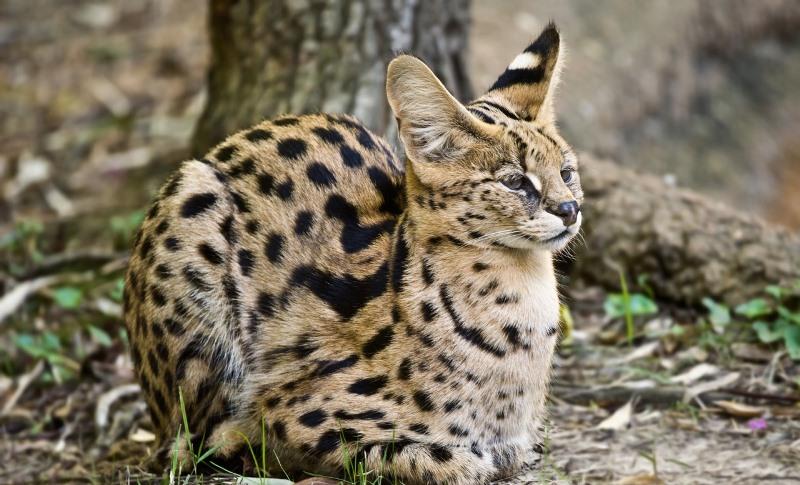
The most important rule: if you live in a cramped apartment with small children, then refrain from such exotic as Serval.
If this cat is already accustomed to your home, then take a few tips.
- Do not let cats play with your hands or feet;
- You can use special mittens made for such cases;
- do not yell at the serval – this is a manifestation of aggression that does not bring together;
- do not hit the animal – it will only spoil its character, make it withdrawn;
- Claim your right to be superior to a wild cat with food and perseverance in requirements.
Serval is a clever animal and, like all cats, sociable. The greatest punishment for him will be the dislike of the owner. He perfectly understands intonation and even words. So you can punish with strict words and a manifestation of resentment, which will be expressed in the reluctance to communicate with the violator of the rules.
Servala really needs to be raised not so much as a cat, as much as a dog. Some owners of these animals and walk with them like dogs – on a leash and with the team “next”. However, it is still a cat that so wants to be a little wild, but next to the beloved owner.
